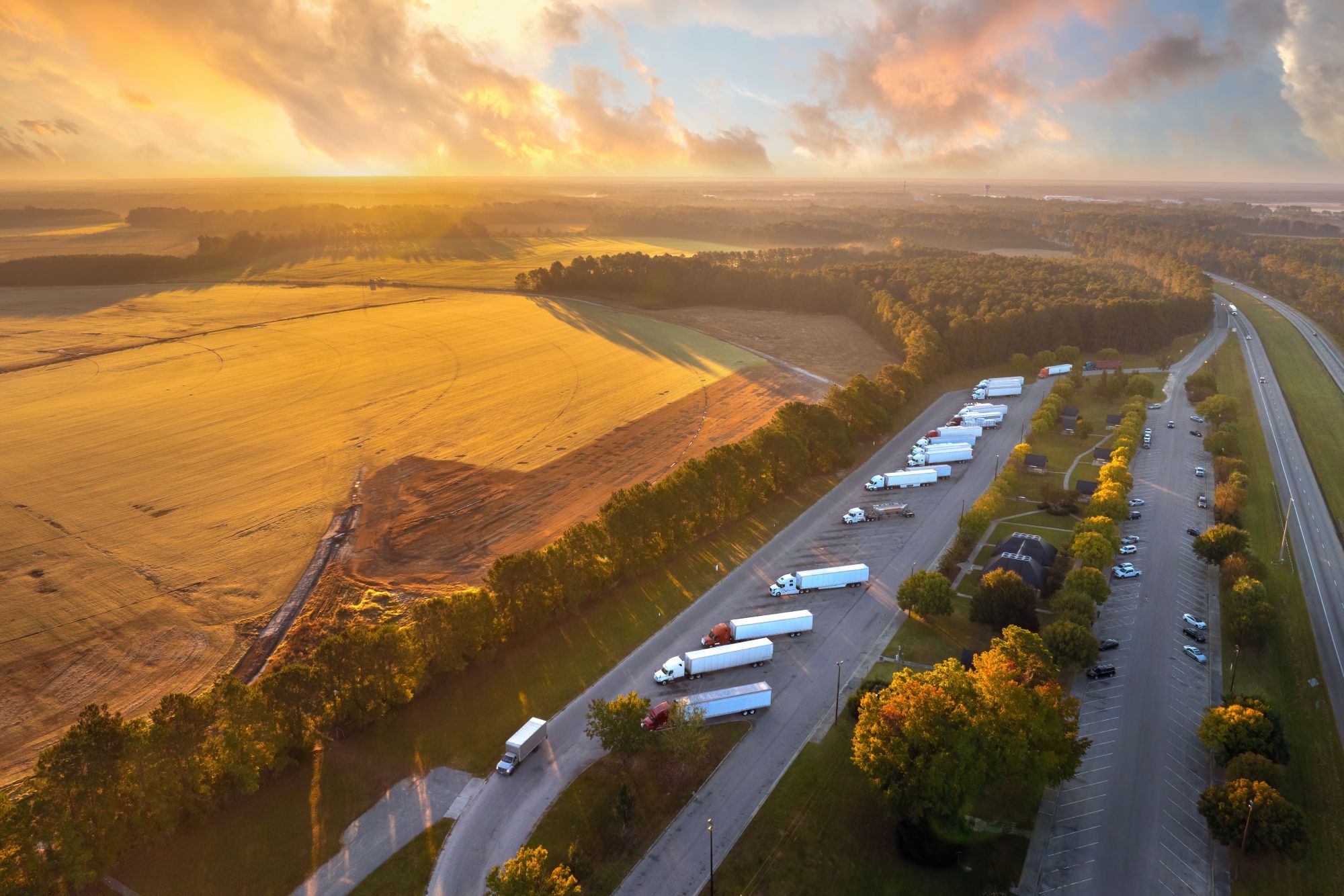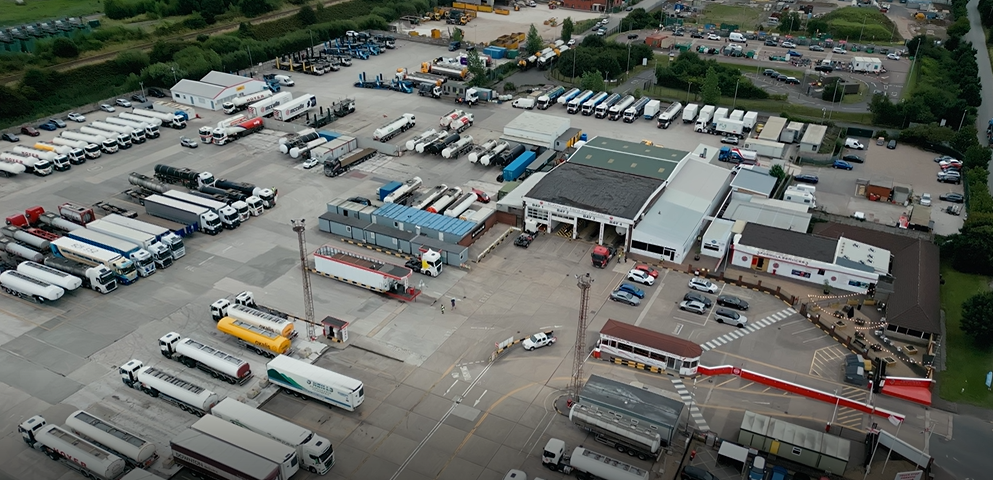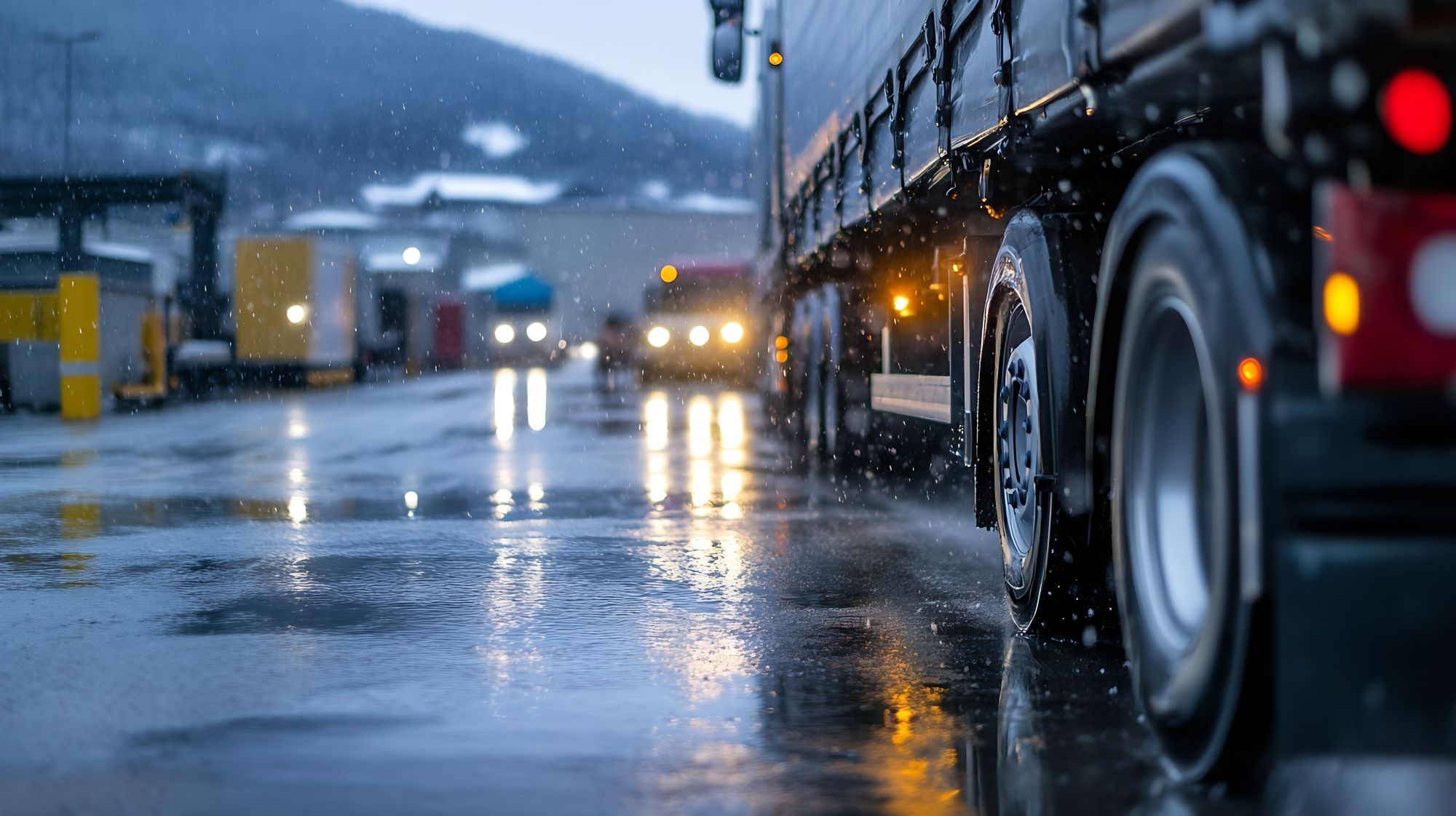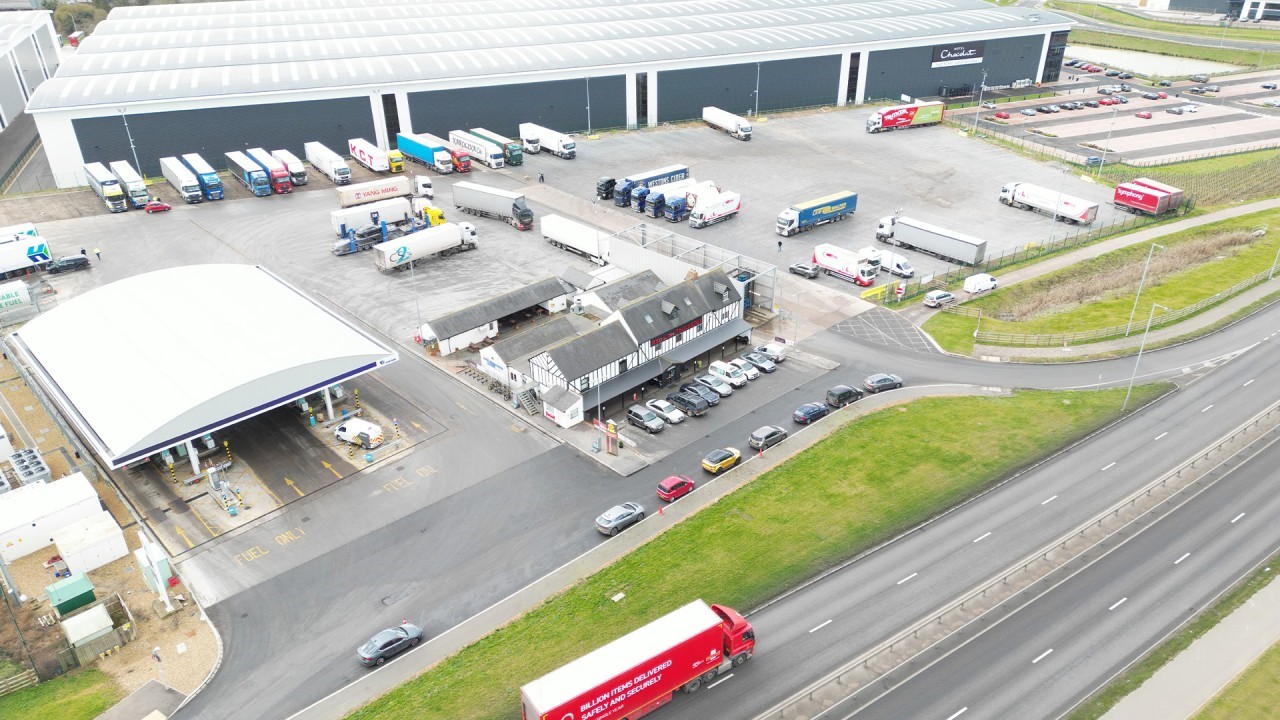
Susie Jones
Red Lion Truckstop - Un modelo de éxito
Creado: 28/08/2024
•
Actualizado: 28/08/2024
A sólo 200 metros de la M1, en la salida 16, se encuentra la parada de camiones Red Lion. Fundado hace más de 30 años, el Red Lion se ha convertido en el destino preferido de los conductores. Descrito como el paraíso de los camioneros, su ambiente comunitario, su deliciosa comida y su amplia gama de instalaciones hacen de esta parada galardonada un firme favorito. El operador, Ali Sadrudin, nos habla del lugar.
"El recinto puede albergar más de 200 camiones por noche. Hay una estación de servicio de combustible de alta velocidad, que no sólo dispensa gasóleo y AdBlue, sino también gas natural comprimido (GNC). También hay un nuevo lavadero de camiones con 3 cepillos. El edificio de servicios cuenta con restaurante y bar, tienda de accesorios para camiones, lavandería, centro de juegos, cajeros automáticos, duchas y aseos con personal, y espacios para actos y reuniones".
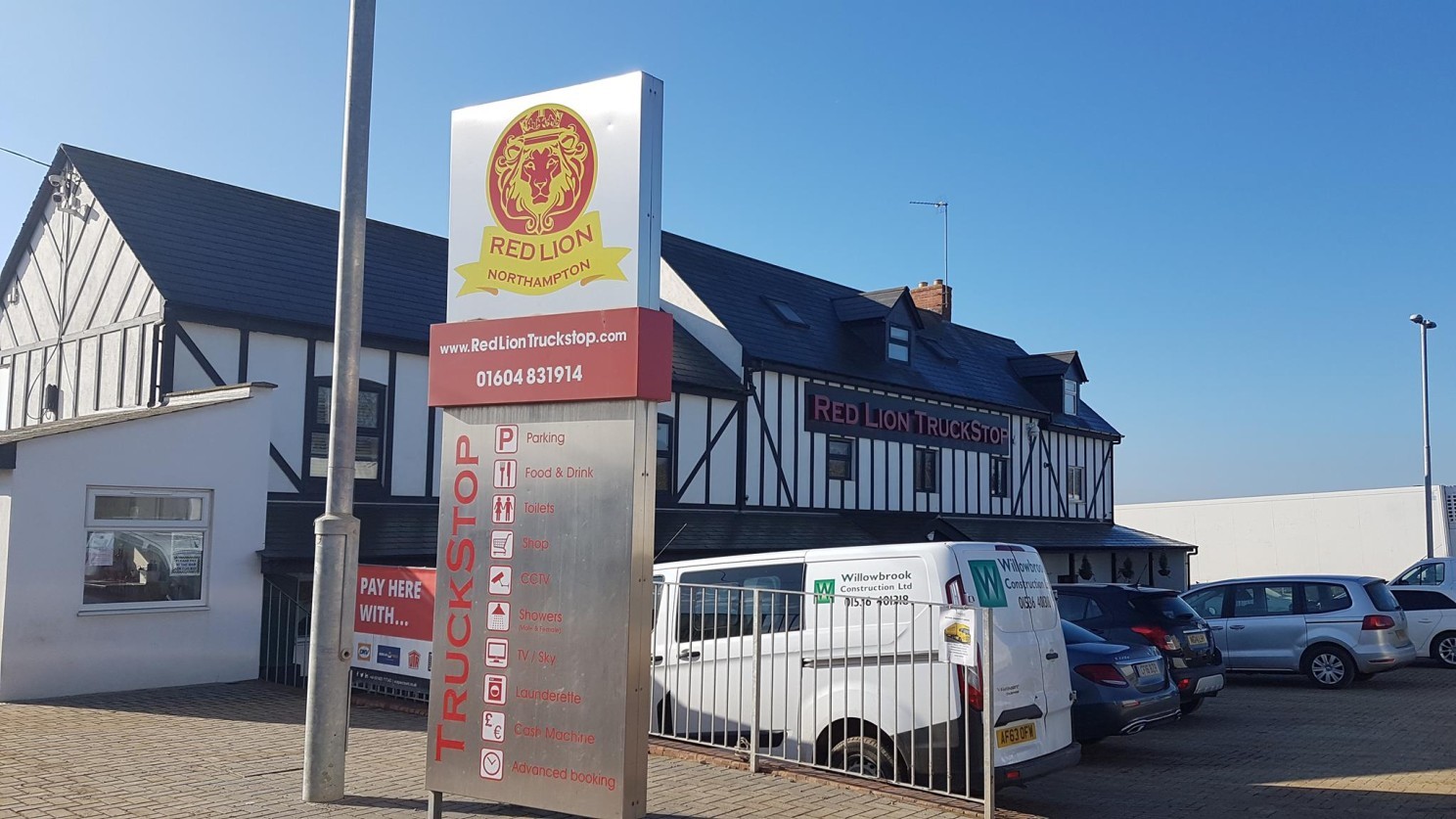
Instalaciones
Algunos pueden ver las paradas de camiones como un mero lugar de descanso para los conductores, pero también desempeñan un papel crucial en la mejora del bienestar de los conductores. En SNAP, sabemos que es imprescindible proporcionar a los conductores unas instalaciones limpias. Pero, ¿qué más necesitan los camioneros?
"Creo que los clientes buscan lo básico, pero bien hecho. Buena comida, instalaciones limpias y seguridad para sus vehículos y sus cargas. Si puedes ofrecer esto, tendrás clientes satisfechos que repetirán", afirma Ali.
Basta con echar un vistazo a la página de Facebook del Red Lion para darse cuenta de que siguen este mantra y de que funciona. Comentarios como "la mejor parada de camiones del país" y "posiblemente una de las mejores paradas de camiones de Inglaterra" respaldan las más de 4.000 reseñas positivas de Google.
Seguridad
Sin embargo, Ali y su equipo no sólo se preocupan de que la comida sea deliciosa y las instalaciones estén limpias. También se toman la seguridad muy en serio. En 2020, se estimó que en el Reino Unido se produjeron más de 4.000 delitos relacionados con camiones, mercancías y carga, lo que supuso un coste de 250 millones de libras para el país. Sitios como el Red Lion han introducido medidas de seguridad para reducir esta cifra.
Ali afirma que "SNAP nos ha ayudado a obtener la certificación TAPA PSR Nivel 3". En febrero de 2023, The Red Lion recibió el premio Park Mark Freight. Ali nos cuenta qué medidas de seguridad se tomaron para lograr este galardón.
"Las instalaciones son seguras por diseño. Tenemos guardas que patrullan las 24 horas del día, los 7 días de la semana, y un tercero supervisa las cámaras de seguridad. Tenemos una valla ininterrumpida de 3 metros alrededor de las instalaciones, con cámaras fijas que vigilan todos los puntos de la misma, para poder detectar cualquier entrada no autorizada o daños en los paneles de la valla. Además, el recinto está totalmente iluminado con los niveles de iluminación requeridos por la policía y cuenta con cámaras de detección de movimiento estratégicamente situadas para detectar cualquier movimiento no autorizado y asegurarse de que todas las zonas del recinto están vigiladas. El sistema ANPR detecta las matrículas que entran y salen del recinto y avisa rápidamente a la policía si es necesario llamarles".
El Red Lion también ha tomado medidas adicionales para garantizar que las conductoras se sientan cómodas y seguras durante sus visitas. Dispone de duchas, aseos y vestuarios para mujeres. Estas medidas no han pasado desapercibidas, ya que, en enero de 2023, la parada de camiones fue nombrada una de las mejores paradas de camiones del Reino Unido para mujeres conductoras de camiones.
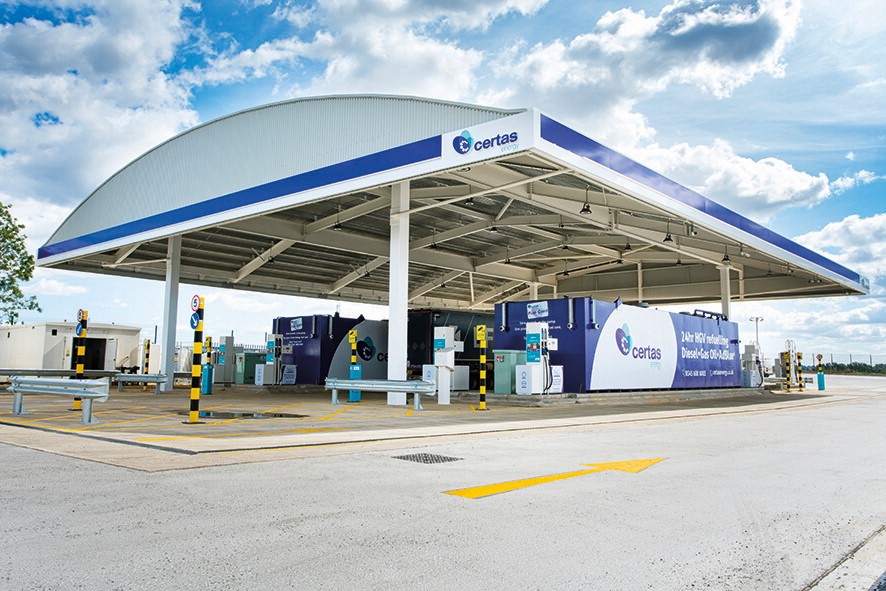
Ingresos y expansión
Uno de los muchos beneficios para los gestores de locales que utilizan SNAP es la mejora de la rentabilidad y la optimización. Como cliente fundador de SNAP, Ali explica cómo SNAP ha aportado a la empresa ingresos adicionales desde su incorporación en 2009.
"Ha sido un proceso gradual a lo largo de los años, sin embargo, como los hábitos de gasto de los conductores cambian continuamente y cada vez no utilizan dinero en efectivo, puedo imaginar que un nuevo sitio que asuma SNAP tendría un retorno inmediato. Aproximadamente el 65% de los ingresos totales del sitio proceden de SNAP".
Sin duda, las cosas han cambiado mucho en el sector desde 2009. Ali explica cómo el sitio ha tenido que adaptarse a la evolución del sector y al aumento de la demanda.
"Inicialmente, el sitio solo podía alojar 130 vehículos pesados por noche, pero en 2018 se amplió a más de 200 para adaptarse al aumento de la demanda", afirma Ali. Para los conductores y las flotas que utilizan SNAP, esas 200 plazas son fáciles de reservar.
Apenas cuatro años más tarde, el centro experimentó una nueva expansión con la introducción de una nueva instalación de lavado de camiones. Inaugurado en noviembre de 2022, el moderno lavadero de camiones de tres cepillos es apto para la mayoría de los LGV.
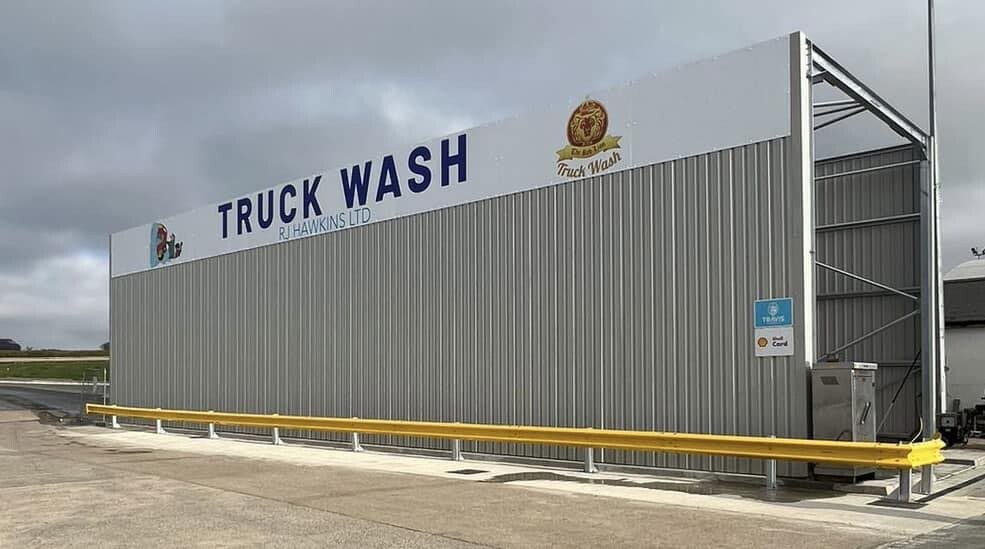
Unirse a SNAP como socio de servicios
Unirse a SNAP pone su establecimiento frente a 160.000 conductores y 7.000 flotas. Para las paradas de camiones, como el Red Lion, que se esfuerzan constantemente por ofrecer nuevas iniciativas e instalaciones a sus clientes, SNAP les brinda la oportunidad de hacerlo.
"SNAP ha permitido al sitio ofrecer un método de pago alternativo que sólo puede beneficiar al cliente y atraerlo al sitio", afirma Ali.
Las ventajas de SNAP
Más de 160.000 conductores utilizan la Cuenta SNAP. Por lo tanto, es vital contar con unos estándares elevados. Aunque los socios de servicios que aceptan pagos de la Cuenta SNAP son empresas independientes, revisamos cada sitio y nos aseguramos de que cumplen nuestros estándares. Además, nuestro equipo de red está disponible siempre que sea necesario.
"SNAP siempre nos ha apoyado desde el primer momento en que nos afiliamos", dice Ali.
Cuando se le pregunta qué es lo mejor de SNAP para ellos, Ali afirma: "es el nivel de servicio, han ido más allá para adaptar el sistema de tickets a nuestras necesidades."
¿Y su consejo para los propietarios de aparcamientos de camiones que estén pensando en abrir su local a los conductores del SNAP?
"¡Hágalo! ¿Por qué no querría atraer más clientes a su sitio?".
Inscribirse en SNAP
Para mejorar su rentabilidad y optimizar el funcionamiento de su sitio web, visite snapacc.com.
